Affiliate links on Android Authority may earn us a commission. Learn more.
The Razer Edge 5G can't compete with what's in your pocket
Published onMay 17, 2023
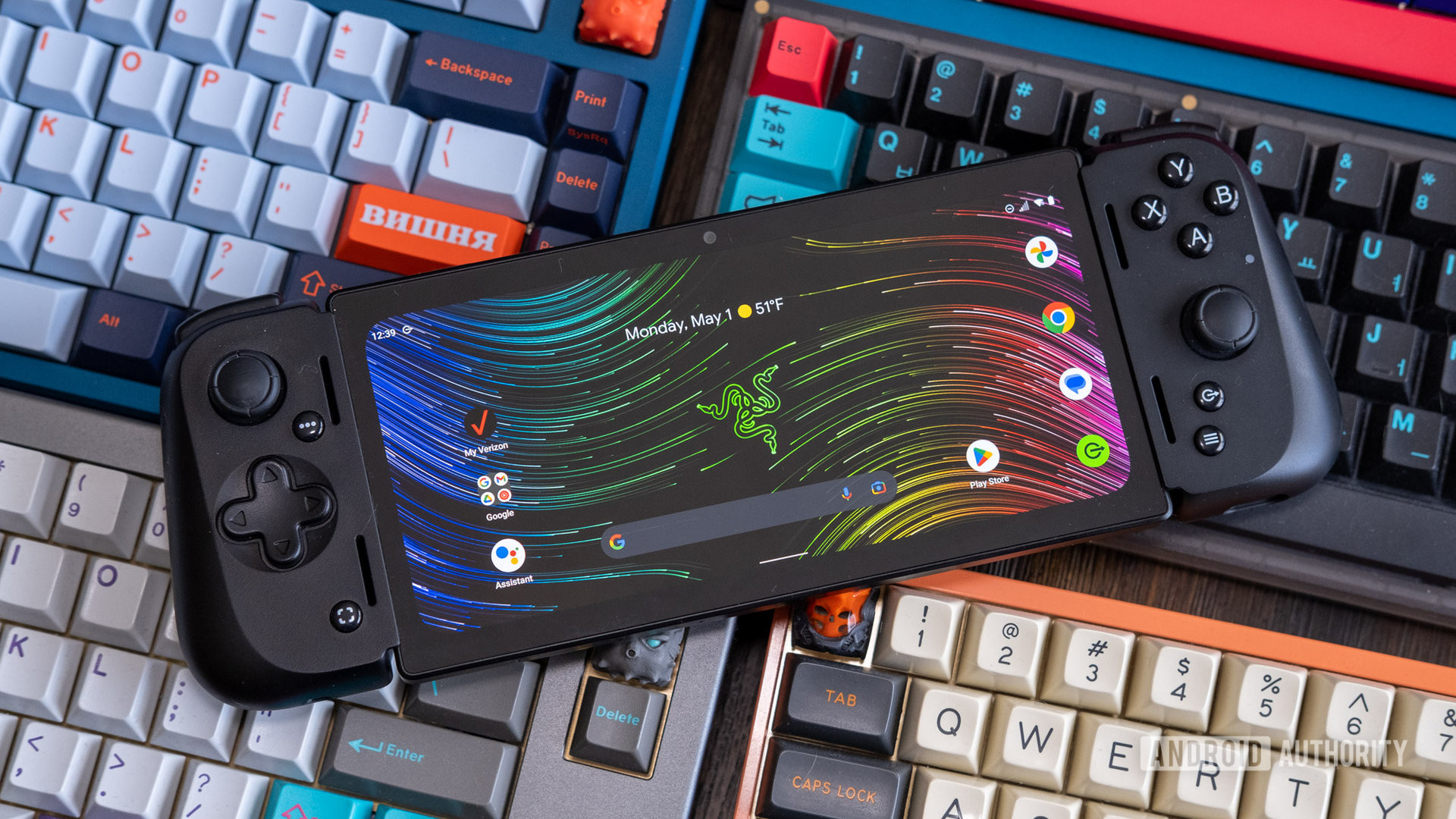
Gaming on the go has never been easier. Devices like the Steam Deck and Nintendo Switch can put AAA games in your hands no matter where you are, and the best smartphones are getting more powerful every year with their own selection of impressive titles. Plus, cloud gaming can stream high-end games to even budget phones or tablets.
With all these ways to enjoy games on the small screen, Razer still wants to add another device to your collection with the Edge gaming handheld. The Razer Edge has a powerful ARM chip optimized for gaming, a great high-refresh-rate OLED display, and a class-leading controller.
What is the Razer Edge 5G?
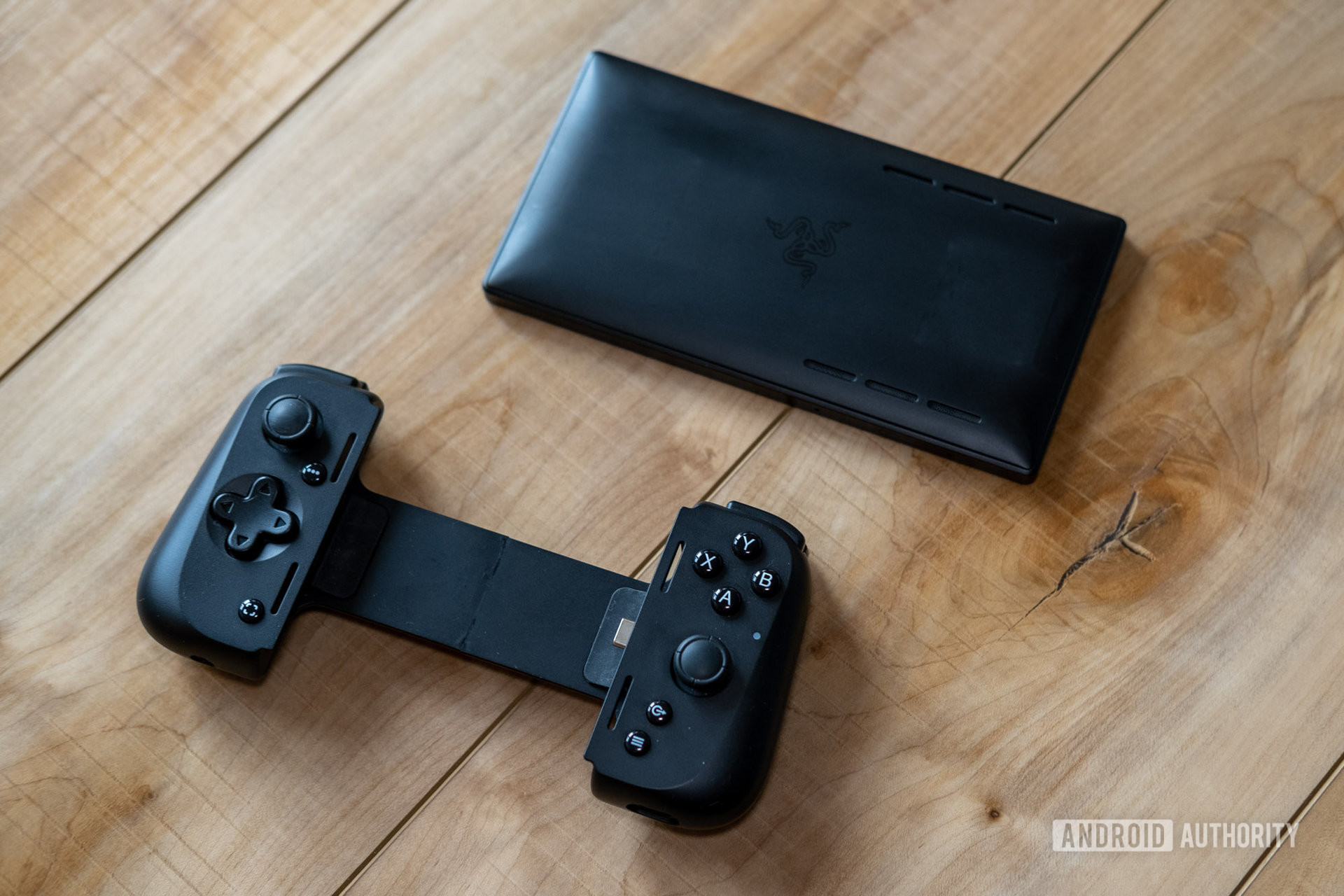
The Razer Edge bills itself as a gaming handheld, but it’s actually a tiny tablet in disguise. When you buy the Edge, what you’re getting is two products bundled together in one box. There’s the Edge itself, a slim, landscape-first Android tablet, and a controller that mates perfectly with the tablet. The controller is a Kishi V2 Pro, which is available standalone for $100 and is essentially the regular Kishi V2 telescopic controller but with a 3.5mm headphone port and a haptic motor. The Wi-Fi-only Edge retails for $400, and the 5G upgrade is $600.
The Razer Edge bills itself as a gaming handheld, but it's actually a tiny tablet in disguise.
The tablet has a 6.8-inch display, but it’s surrounded by substantial bezels. The overall device is slightly larger than the biggest Android phones, like the Galaxy S23 Ultra. While you could use this as a tiny Android tablet, a big phone will do the job better. Your phone is doubtlessly easier to hold, and it doesn’t have vents on the back for the internal cooling fan. The Edge’s fan can get loud when you’re playing a game, but it runs at low speed even during less strenuous activities like streaming video.
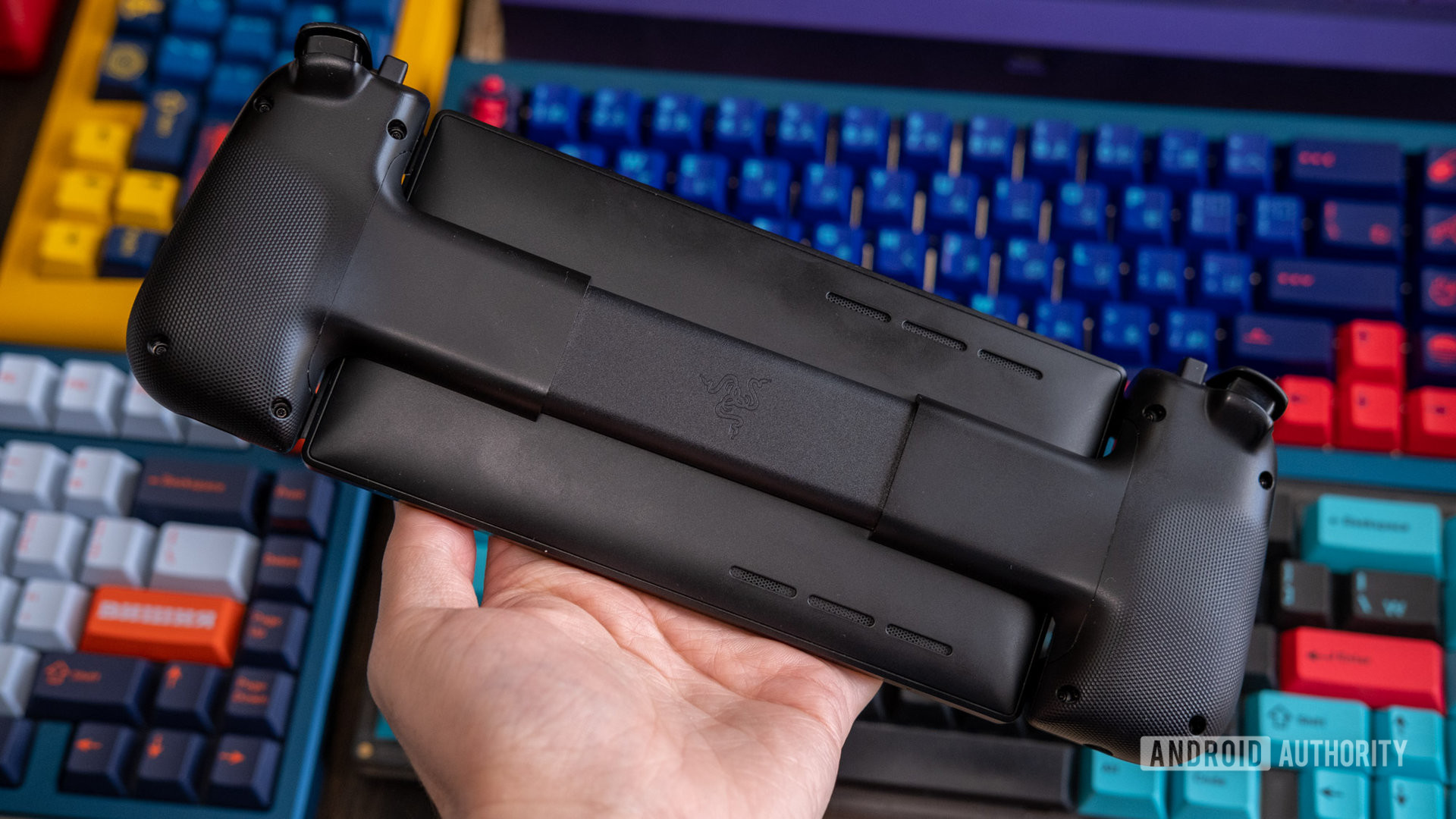
The controller can be a little loud, too, though not everyone will be as fussed over the noise as we were in our review of the Kishi V2. It uses microswitch buttons similar to the full-sized Wolverine V2 controller. They offer a clicky, tactile experience with shorter travel, and they’re much better than what you’d find on most mobile controllers.
The controller doesn’t rely on Bluetooth — it connects to the tablet (or any other Android device) via a USB-C plug on the right side. The Edge has been crafted to fit into the Kishi’s slots perfectly, so it really does feel like a unified device when assembled. That said, the Kishi doesn’t feel that much less sturdy when connected to other Android phones. The controller thoughtfully includes a passthrough USB-C port for charging and the aforementioned headphone jack, which your phone probably doesn’t have.
Mobile gaming is headed to the cloud
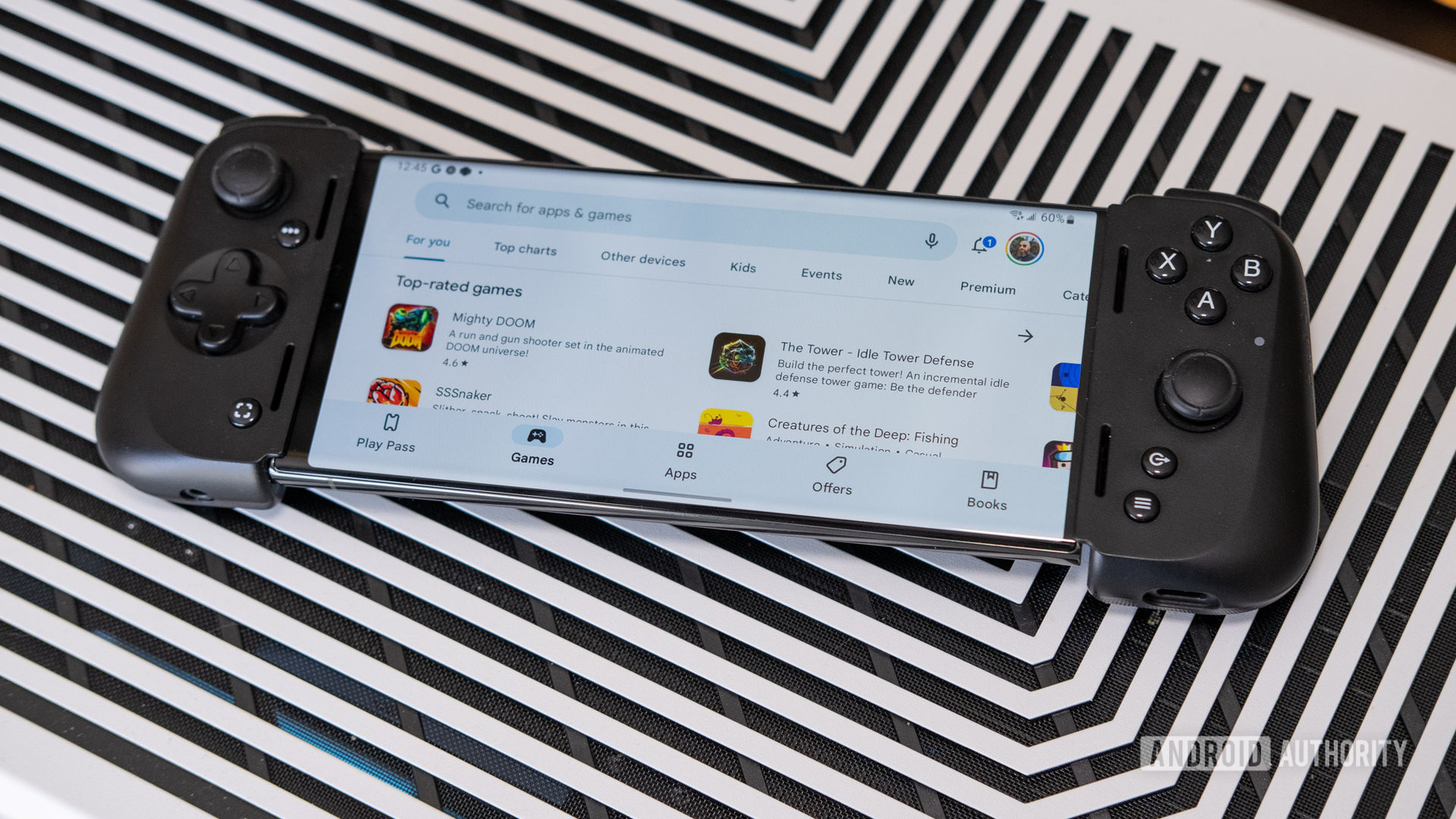
It’s hard not to compare the Edge to Logitech’s G Cloud, and while they take similar approaches to cloud gaming, the software experience is very different. Logitech attempted to make its device a gaming handheld first and foremost, giving the device a complete system UI overhaul.
Razer, on the other hand, equipped the Edge with a fairly stock build of Android 12. The custom software features are managed in Razer’s pre-loaded Nexus app. This app can be rather confusing and irritating, so we’re happy Razer left Android alone, even if it’s awkward to use the Edge as a tablet because of it.
The Razer Edge doesn’t skimp on power, which is both a blessing and a curse. If there’s a mobile game you would even consider playing on an Android device, the Razer Edge will run it flawlessly, thanks to the Snapdragon G3X Gen 1. It’s not the fastest gaming chip — it’s a couple of years old and actually gets bested in benchmarks by the latest Snapdragon 8 Gen 2. Still, it’s plenty fast, and the active cooling system sets it apart.
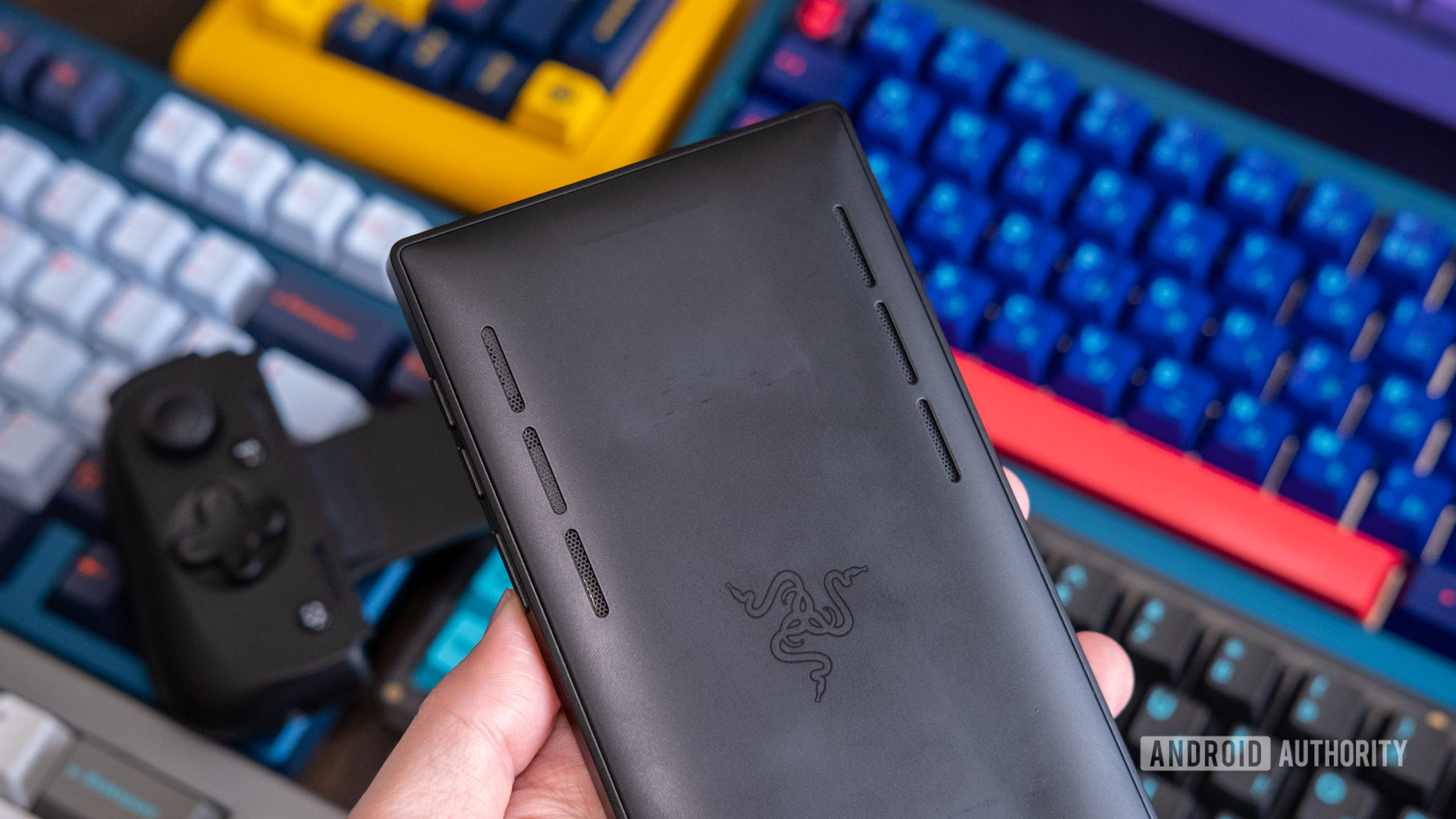
Most smartphones start fast but throttle down after just a few minutes of gameplay due to heat. The cooling fan in the Edge, combined with a capable gaming chip, ensures that your games remain buttery smooth. On the other hand, even the most demanding mobile games aren’t terribly resource-intensive. A device like the Edge can make them look better than, for example, a flagship Samsung phone with no active cooling, but the difference is so minor as to be unimportant.
You don't need a powerful gaming chip like the Razer Edge's for cloud streaming — as far as your device is concerned, the games are simply compressed video.
The Edge has a 5G variant (which is the one we’ve tested) with 8GB of RAM instead of 6GB and access to Verizon‘s 5G network. The selling point is that you can access cloud gaming services on a gaming-optimized device. However, you don’t need a powerful gaming chip for cloud streaming — as far as your device is concerned, the games are simply compressed video. This only serves to make the device more expensive, louder, and less efficient than it needs to be for its intended purpose.
Razer Edge 5G review: Should you buy it?
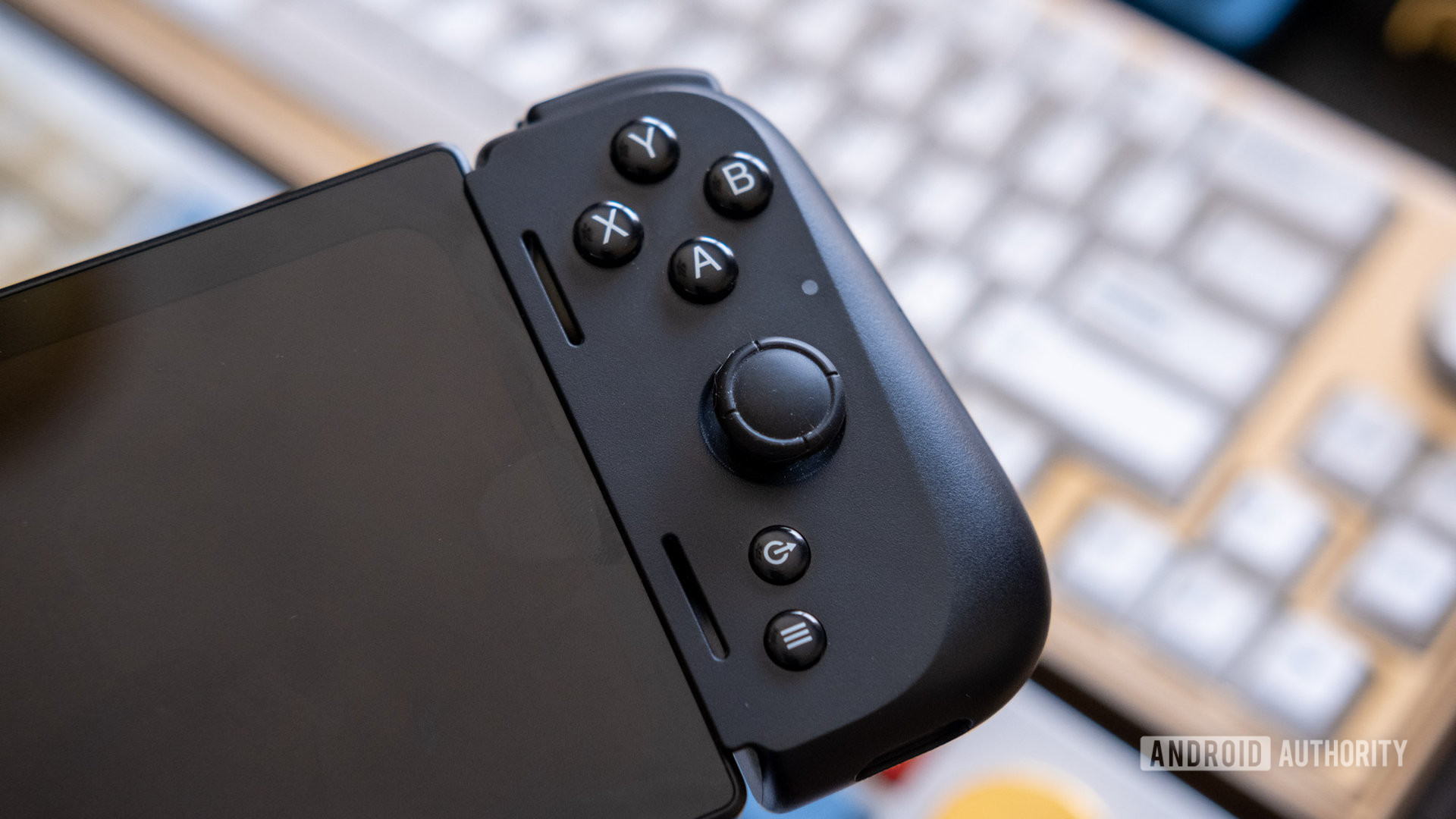
At the end of the day, I find the Razer Edge no easier to justify than the Logitech G Cloud I previously tested. It’s good at what it does, thanks to the powerful hardware and excellent controller, but the truth is most people should just buy a controller — you can get essentially the same one that comes with the Edge, the Kishi V2 ($92 at Amazon), and attach it to the smartphone you already have. Then you’re ready for the cloud, because that’s really what we’re talking about.
This resurgence in Android handhelds beyond niche brands is not a result of Fortnite, Genshin Impact, or any other mobile game phenomena — it’s thanks to cloud gaming. I have to think the Edge and G Cloud would have made more sense in a world where Stadia still existed. Google’s dearly departed cloud gaming service had the best technology, even if the content and business model were messy.
Without Stadia, you have GeForce Now and Xbox Cloud Gaming via Game Pass Ultimate duking it out for the top spot. NVIDIA’s service is clunky and requires you to both purchase games and pay for a streaming subscription. Xbox, meanwhile, has an all-you-can-game sub, but it’s still a beta service (and it shows). Still, Microsoft is promoting the Razer Edge, and Xbox gets top billing in the Nexus app.
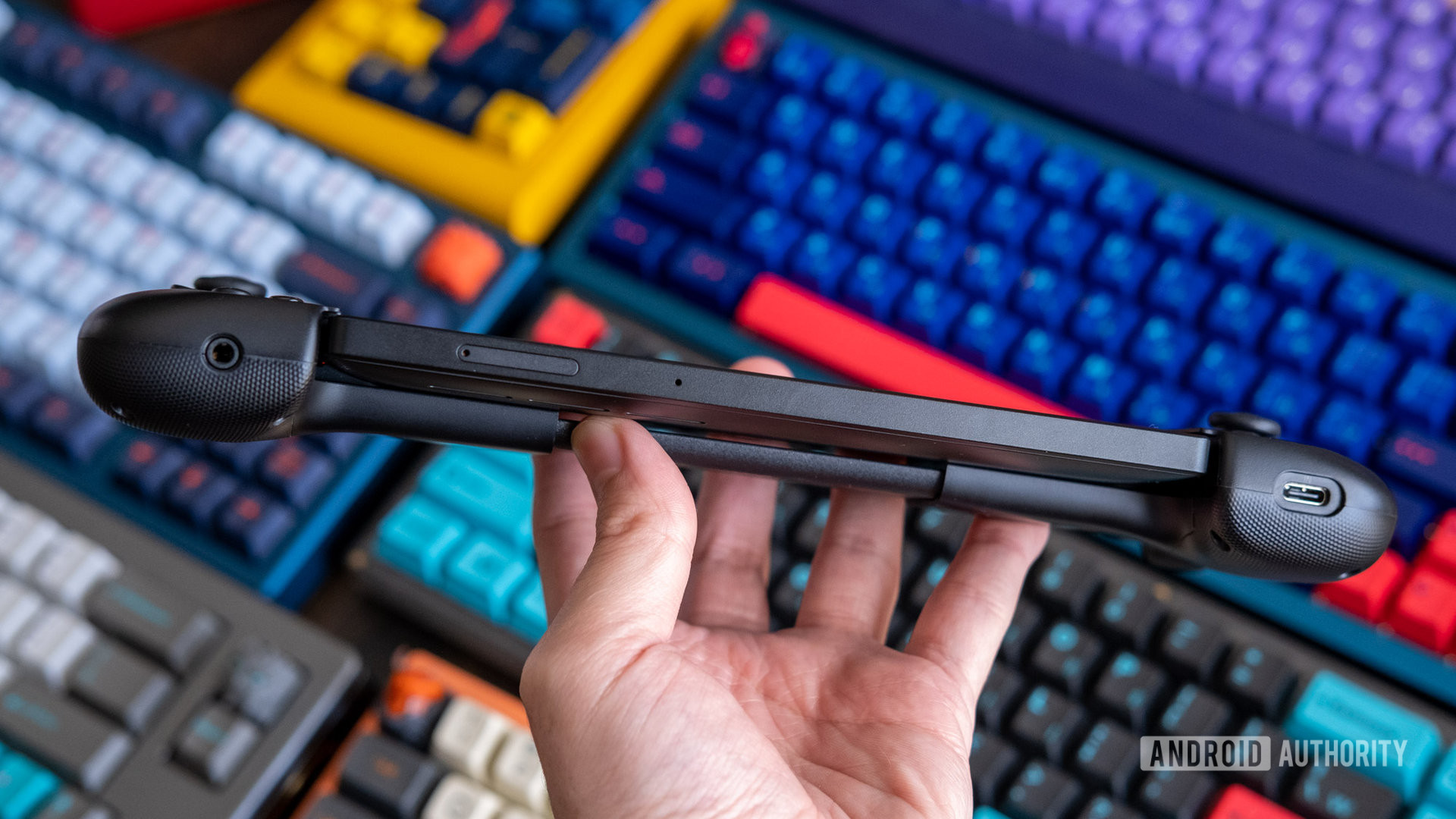
Admittedly, cloud gaming has reached minimum viability—if you have a good internet connection and the servers are having a good day, the games can feel almost local. But most days, there are a lot of hiccups. Buying a gaming handheld for this experience when you already have a phone is a tough sell.
But let’s just say you want a dedicated gaming handheld, either to save your smartphone’s battery or because you just like tinkering with shiny new gadgets. Well, your cup runneth over with good options, some of which are much more capable than the Razer Edge. There’s the Steam Deck, which can run PC games, and the upcoming ASUS ROG Ally might do that even better; plus, it’ll support cloud gaming. There’s also the Nintendo Switch if you care more about AAA content than raw power.
So, on one side, you have a controller add-on for your phone, and on the other, more powerful gaming systems. The Razer Edge is stuck in the middle, a jack of all gaming trades but a master of none.
